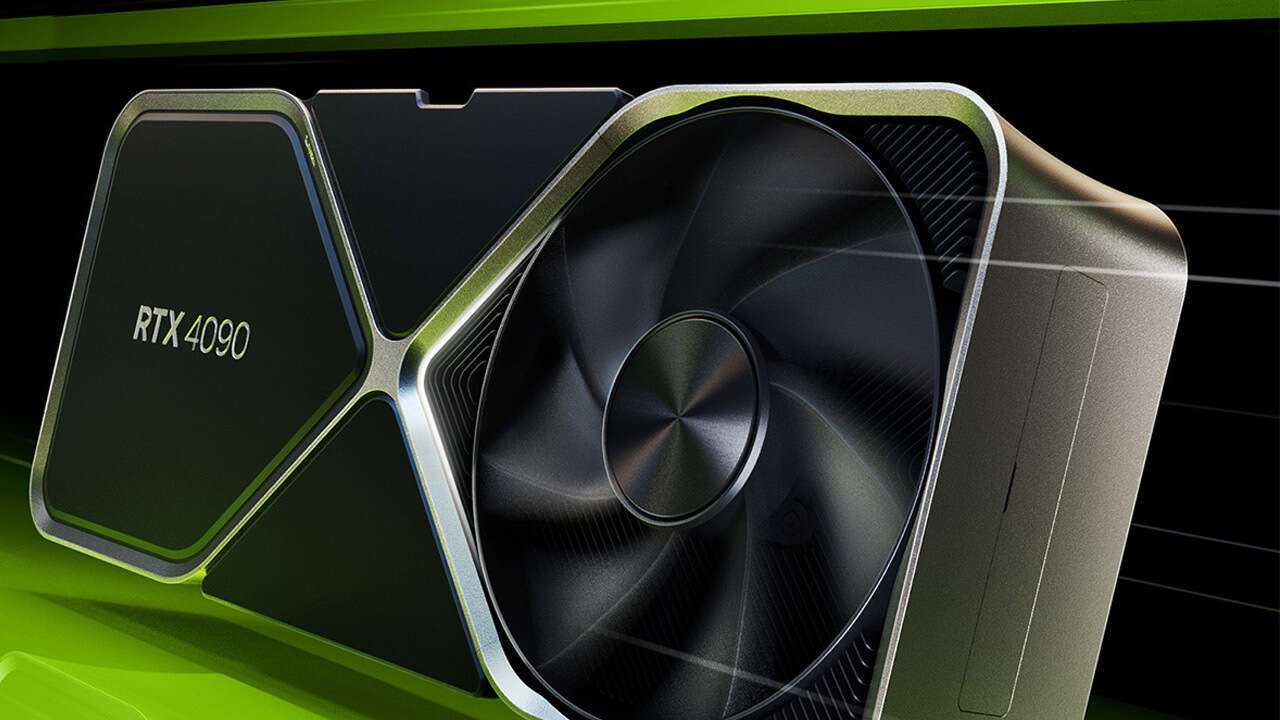Rising GPU Prices: Impact On Gamers And Professionals

Table of Contents
Causes of Rising GPU Prices
Several interconnected factors contribute to the current surge in GPU prices. Understanding these underlying issues is crucial to anticipating future trends and mitigating their impact.
Increased Demand
The demand for GPUs has exploded in recent years, driven by several converging trends:
-
Booming Gaming and Esports Industry: The explosive growth of the gaming industry, fueled by the rise of esports and increasingly realistic game graphics, has created a massive demand for high-performance GPUs. The latest AAA titles require powerful hardware to run smoothly, driving consumers to seek out the best available GPUs.
-
Cryptocurrency Mining Boom and Bust: The cryptocurrency mining frenzy, particularly with coins like Ethereum (before its merge), significantly increased the demand for GPUs, as they are essential for processing complex cryptographic calculations. Although the cryptocurrency market has experienced significant volatility, the impact of previous mining demand lingers.
-
AI and Machine Learning Advancements: The rapid advancement of artificial intelligence and machine learning relies heavily on the parallel processing capabilities of GPUs. Researchers, developers, and businesses working in AI require powerful GPUs for training complex models and running sophisticated algorithms. This growing sector contributes significantly to the overall demand.
-
Supply Chain Disruptions: Global supply chain issues have further exacerbated the situation. These disruptions have impacted the availability of essential components and increased manufacturing and shipping costs.
- Shortage of Key Components: A shortage of silicon wafers, a crucial component in GPU manufacturing, has significantly hampered production.
- Increased Manufacturing Costs: Global events, such as the ongoing pandemic and geopolitical instability, have led to increased manufacturing costs, contributing to higher GPU prices.
Supply Chain Issues
Beyond increased demand, significant supply chain challenges have severely constrained the availability of GPUs:
-
Global Chip Shortages: The global semiconductor shortage has directly impacted GPU production, leading to limited availability and increased prices. This shortage affects not just GPUs but many other electronic devices.
-
Logistics Bottlenecks: Shipping delays, port congestion, and logistical bottlenecks have further compounded the problem, delaying the delivery of finished products and exacerbating shortages.
-
Trade Wars and Tariffs: International trade disputes and tariffs have added to the cost of importing and exporting GPUs, increasing the final price for consumers.
- Factory Closures and Production Limitations: Pandemics and natural disasters have led to temporary factory closures and production limitations, further reducing the supply of GPUs.
- Increased Shipping Costs and Transit Times: The cost of shipping goods globally has increased substantially, adding to the overall cost of GPUs.
Impact on Gamers
The rising GPU prices have a significant impact on the gaming community:
Affordability Challenges
High GPU prices are making high-end gaming inaccessible to many:
-
High Prices Limit Access: The cost of a top-tier gaming GPU has become prohibitive for many gamers, forcing them to compromise on their gaming experience.
-
Compromised Graphics Settings: Gamers are often forced to reduce graphics settings to achieve acceptable frame rates, impacting the overall visual quality of their games.
-
Delayed Upgrades and Purchases: Many gamers are delaying or forgoing upgrades, sticking with older, less powerful hardware.
- Shift Towards Used GPU Markets: The increased cost of new GPUs has driven many gamers towards the used GPU market, increasing the risk of buying faulty or damaged hardware.
- Increased Competition for Limited Stock: The limited availability of new GPUs has created intense competition, making it difficult to purchase even mid-range models.
The Rise of Used GPU Markets
The high prices of new GPUs have led to a surge in the used GPU market:
-
Increased Demand for Pre-owned GPUs: Gamers are increasingly turning to the secondary market to find more affordable options.
-
Potential Risks of Used Hardware: Purchasing used GPUs carries inherent risks, including the possibility of buying faulty or damaged hardware.
- Verification of GPU Functionality: Thorough testing and verification of functionality are crucial before purchasing a used GPU.
- Higher Risk of Scams and Fraud: The used GPU market is also susceptible to scams and fraud, requiring caution and due diligence from buyers.
Impact on Professionals
The increased GPU prices also have a substantial impact on professionals who rely on GPU-accelerated applications:
Increased Operational Costs
High GPU costs significantly increase operational expenses for businesses:
-
Higher Costs for GPU-Accelerated Applications: Businesses relying on GPU-accelerated applications, such as AI research, scientific modeling, and video editing, face significantly higher operational costs.
-
Budget Constraints Impact Research and Development: The rising cost of GPUs can constrain research and development budgets, hindering innovation and progress.
- Difficulty Upgrading or Expanding GPU Infrastructure: Businesses may struggle to upgrade or expand their GPU infrastructure due to budget limitations.
- Increased Pressure to Optimize GPU Usage: There is increased pressure to optimize GPU usage efficiently to minimize costs.
Alternative Solutions and Strategies
Professionals are exploring various strategies to mitigate the impact of rising GPU prices:
-
Cloud Computing Solutions: Leveraging cloud computing resources allows businesses to access powerful GPUs without the high upfront costs of purchasing and maintaining their own hardware.
-
Optimization of Existing GPU Resources: Improving software optimization and efficient resource allocation can reduce the reliance on high-end GPUs.
- Investing in More Efficient, Power-Saving GPUs: Choosing GPUs that balance performance and power consumption can help manage costs.
- Consideration of Alternative Hardware Architectures: Exploring alternative hardware architectures, such as FPGAs or specialized processors, might offer cost-effective solutions for specific tasks.
- Focus on Software Optimization to Reduce GPU Dependency: Refining algorithms and software can reduce the overall demand on GPUs.
Conclusion
The rising cost of GPUs presents significant challenges for both gamers and professionals. The confluence of high demand, supply chain disruptions, and other factors have created a difficult market. While solutions like cloud computing and used GPU markets offer some mitigation, understanding the root causes and their impact is crucial for navigating this challenging landscape. Staying informed about GPU price trends and exploring alternative options is essential for managing budgets and ensuring access to the necessary computing power. Keep an eye on the fluctuating GPU prices and plan your purchases accordingly. Consider exploring alternative solutions such as cloud computing or used GPU markets to mitigate the impact of these high GPU costs. Understanding the factors driving GPU price increases will empower you to make informed decisions.

Featured Posts
-
 Mets Option Dedniel Nez To Syracuse Add Tylor Megill To Rotation
Apr 28, 2025
Mets Option Dedniel Nez To Syracuse Add Tylor Megill To Rotation
Apr 28, 2025 -
 Monstrous Beauty A Feminist Reimagining Of Chinoiserie At The Met
Apr 28, 2025
Monstrous Beauty A Feminist Reimagining Of Chinoiserie At The Met
Apr 28, 2025 -
 Quietly Dominant Predicting A Breakout Season For A Red Sox Underdog
Apr 28, 2025
Quietly Dominant Predicting A Breakout Season For A Red Sox Underdog
Apr 28, 2025 -
 Qayd Eam Shrtt Abwzby Yhny Mnswbyh Wytfqd Jhwdhm Fy Aleml
Apr 28, 2025
Qayd Eam Shrtt Abwzby Yhny Mnswbyh Wytfqd Jhwdhm Fy Aleml
Apr 28, 2025 -
 New York Mets Vs Minnesota Twins Final Score 6 3
Apr 28, 2025
New York Mets Vs Minnesota Twins Final Score 6 3
Apr 28, 2025
